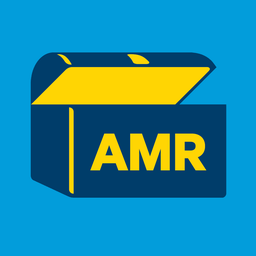Smaller circle inside “what people actually understand”, “what people actually care about”.
- 5 Posts
- 120 Comments

 1·1 year ago
1·1 year agoMy guess on what is happening:
The app makes a temporary copy of the settings data when the settings page is opened. The settings UI elements are connected to the temporary data. When the user clicks save, the app overwrites the actual settings data with the temporary data, but if they exit without saving the temporary data is discarded.
The blocklist settings page interacts with the actual settings data directly and thus doesn’t need to be saved, but the blocklist is also stored in the temporary settings data; saving overwrites the changes the user just made with the cached version from before they opened settings.
Personally I would prefer that the save settings button be done away with completely and all settings changes be effective as soon as they are made. This would be far more intuitive for the user and is how it works in pretty much every other mobile app I’ve used.
Especially now that there are settings subpages, it is unclear whether using the save button in a subpage saves all the settings or just the one on that subpage, and whether or not using the save button on the main page saves the settings in the subpages as well.

 3·1 year ago
3·1 year ago*leek
Edit: it’s even in the URL

 4·1 year ago
4·1 year agoI have no doubt people will be able to hack it. What I’m saying is there is no way it could be hacked without the company finding out and forcing you to return it or pay up. When you sign up you have to give them your personal information and credit card. If you disconnect it from the Internet, filter its Internet traffic, or modify it in any way they will tell you to return it and if you don’t return it they will charge the credit card.
From their terms of service:
In order to use the Product and Services, You will:
(a) Use the Product as the primary television in Your household;
(b) Keep the Product connected to WiFi and internet; and
© Not use any software on Your WiFi network that with advertising blocking capability.
(d) Not make physical modifications to the Product or attach peripheral devices to the Product not expressly approved by Telly. Any attempt to open the Product’s enclosure will be deemed an unauthorized modification.
If we discover that You are not abiding by the requirements above or have disconnected the Product from an internet connection or WiFi for more than short periods each month, You will no longer be able to use the Service and You must return any Products in your possession to Telly. Failure to return Products to Telly will result in Telly charging the credit card on file.

 53·1 year ago
53·1 year agoNo, the maker has stated they have measures in place to detect any tampering, and that if you tamper with the device, fail to connect it to the Internet, or do not use it frequently they will make you return it or pay for it.

 7·1 year ago
7·1 year agoThey have said that they can’t stop people from doing that, but that the settings menus, such as the input switcher, will be on the bottom screen.

 191·1 year ago
191·1 year agoThey have stated they have measures in place to detect anyone trying to do that and will require them to return the TV or pay for it.

 1·1 year ago
1·1 year agoDoes it work with password manager apps like Google keyboard does?

 4·1 year ago
4·1 year agoThis makes Breezewood is one of the worst case examples of this kind of development. When explaining something it helps to use an extreme example, so I’m not saying people shouldn’t use the photo, but it’s worth keeping the perspective that that image is literally as bad as it gets.
I will say it is the worst place to be a pedestrian that I have personally experienced. Four lanes of constant heavy traffic with no sidewalks or pedestrian crossings.
The photo was taken near 39.998760,-78.242210 if you want to look it up on your map of choice.

 133·1 year ago
133·1 year agoThat same photo of Breezewood PA that everyone uses.
Yes the US is ugly but that photo is of an extremely unique situation. This is the only place in a 2000-mile-long freeway where there are traffic lights, so of course businesses have taken advantage of that. It’s not a town, it’s basically a truck stop.
You need to link to the image itself, not the imgur page:
This
will look like this:
This:
will look like this:
Indeed, topograpgically it is not a hole.

 1·1 year ago
1·1 year agoMakes sense, my town only has 3 sets of escalators that I know of so I don’t see many.

 1·1 year ago
1·1 year agoI wasn’t aware of that. I took a quick look and as far as I can tell the feature set is the same. They’re also endorsed by Mozilla which at least for me proves they’re very legit. I’ve edited my comment to recommend that instead.
My usage is a little higher than the query limit for the free tier but I will probably switch to their paid tier once my current subscription period is up.
Thanks for the recommendation.

 3·1 year ago
3·1 year agoControlD It’s a paid service and not as good from a privacy standpoint as something self-hosted, but it’s effective, easy to set up, reasonably priced ($20/year), and I can use it anywhere.NextDNS appears to have all the same features BUT it has a full featured free tier with monthly request limit high enough the average person probably won’t hit it, and it’s probably better from a privacy standpoint.
There’s a web dashboard you use to set it up so no apps to install. There’s a bunch of preset blocklists you can pick from and customize. You can also set different white/black lists for different devices.
I’ve only had a few sites break, and when they do I can just open the dashboard and whitelist them. There’s a feature that temporarily shows you all the attempted requests so if something is breaking you can figure out which domain to whitelist.







Same guy that makes SponsorBlock, so there’s a decent chance this will have an API and could be worked into YouTube Revanced like SponsorBlock is.